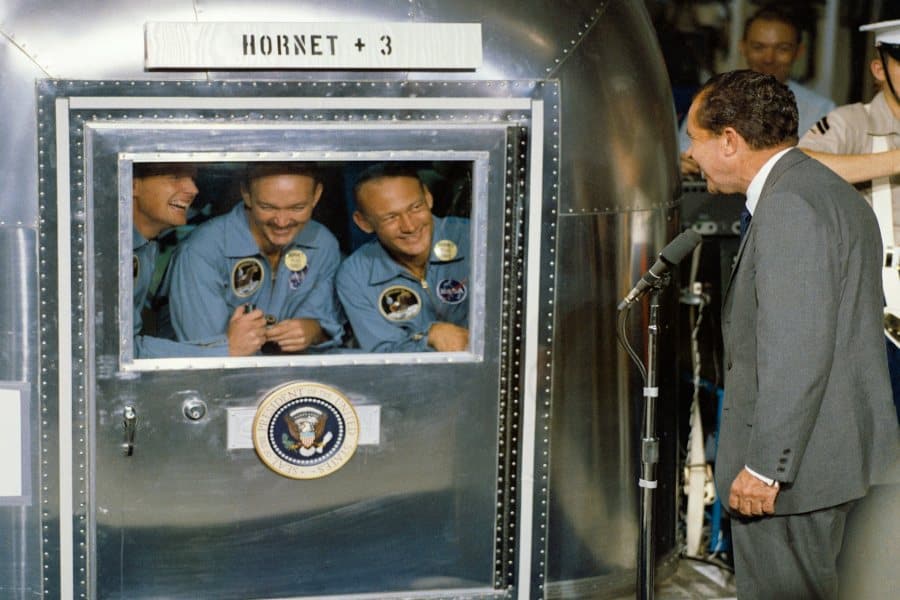In the annals of American history, presidential travel has always been a symbol of leadership, unity, and a commitment to serving the diverse populace of the United States. From the bustling streets of New York City to the serene shores of Hawaii, each state offers a unique tapestry of culture, geography, and people. But, who was the first Commander-in-Chief to embark on the monumental journey of visiting all 50 states? This question not only piques our curiosity but also unfolds a significant chapter in the story of the American presidency.
As we delve into this intriguing aspect of presidential history, we uncover the identity of the pioneering leader who set out on this expansive journey. This unprecedented feat not only marked a historical milestone but also reflected a profound commitment to understanding and connecting with Americans across every state. Join us as we explore the significance of this achievement and its lasting impact on the role of the President as a unifier and a representative of the entire nation.
Who Was The First President To Visit All 50 States
Richard Nixon, the 37th President of the United States, holds the distinction of being the first Commander-in-Chief to visit all 50 states. Achieving this milestone during his presidency from 1969 to 1974, Nixon’s extensive travels across the country underscored his commitment to engaging with Americans in every corner of the nation. This historic feat demonstrated his dedication to understanding the diverse needs and concerns of citizens, regardless of their geographic location, and marked a significant moment in the history of presidential travel.
The Significance Of Presidential Travel
Presidential travel is more than a mere formality; it is a powerful tool for fostering national unity and understanding. When a President travels across the diverse landscapes and communities of the United States, they are not just fulfilling a ceremonial role.
Rather, they are actively engaging in one of the most crucial aspects of governance. Through these journeys, the President gains firsthand insights into the varied needs, concerns, and aspirations of the American people, experiencing the rich tapestry of cultures, economies, and social issues that make up the nation.
This intimate understanding is vital for effective leadership and policy-making. These visits serve to bridge the gap between the federal government and local communities. They allow the President to address local issues, celebrate regional achievements, and acknowledge unique challenges faced by different states.
Moreover, presidential travel plays a critical role in boosting morale and fostering a sense of national identity among citizens. It sends a strong message that every part of the country is important and that every citizen matters in the national discourse.
The Journey To All 50 States
Embarking on the quest to visit all 50 states is a formidable challenge for any President, given the vast expanse and varied geography of the United States. Each state offers its own unique set of opportunities and challenges for a presidential visit. From the sunny beaches of Hawaii to the rugged mountains of Alaska, and from the historical richness of New England to the technological hubs of the West Coast, the range of experiences is as vast as the country itself.
1. Logistics and Planning:
The logistics, planning, and resources required for such extensive travel are significant. Coordinating security, transportation, and communication across different regions requires meticulous organization and considerable resources.
2. Symbol of Commitment:
Yet, the willingness to undertake this journey is a testament to the President’s commitment to being a leader for all Americans, regardless of where they live. It symbolizes the President’s dedication to understanding and addressing the diverse needs of every state in the union.
The Historic Achievement
1. First President to Visit All 50 States: Richard Nixon, the 37th President of the United States, was the first president to visit all 50 states. This historic achievement occurred during his presidency from 1969 to 1974.
2. Commitment to National Unity: Nixon’s initiative to travel to every state demonstrated his desire to be a President for all Americans. He aimed to represent not only those in populous or politically significant areas but every citizen across the nation.
3. Diverse Geographical Engagement: Nixon’s travels were extensive, spanning from the bustling cities of the East Coast to the serene towns of the Midwest, through the Southern heartlands, and reaching the Pacific Northwest. His journey covered the diverse landscapes and communities of the United States.
4. A Blend of Duties and Personal Interactions: His trips included a mix of official presidential duties, public addresses, and direct interactions with American citizens. Nixon’s approach emphasized the importance of engaging with people from various walks of life.
5. Setting a Precedent for Future Leaders: By visiting every state, Nixon set a powerful example for future leaders about the significance of physically connecting with and understanding the people they serve, highlighting the role of a president as a unifier and representative of the entire nation.
Nixon’s Legacy Of Presidential Travel
- Setting a New Standard: Richard Nixon’s commitment to visiting all 50 states established a new benchmark for presidential travel. His initiative demonstrated a level of dedication to physically engaging with the entire nation.
- Connecting with Diverse Communities: Nixon’s extensive journeys allowed him to connect with Americans from various backgrounds. This approach emphasized the importance of understanding the diverse perspectives and experiences of people across the country.
- Addressing Local and Regional Concerns: Through his travels, Nixon gained firsthand insight into the local and regional issues faced by different communities. This knowledge enabled him to tailor his policies and initiatives to better meet the specific needs of these areas.
- More Than Official Visits: Nixon’s trips were not just about fulfilling official duties; they were part of a broader mission to unify the country. He used these visits to break down geographical and cultural barriers, fostering a greater sense of national unity.
- Bridging Divides: The legacy of Nixon’s travel is seen in how it helped bridge divides across the nation. His commitment to being present in every state set a precedent for future presidents to be more inclusive and representative of all Americans, regardless of their location or background.
The Impact On Future Presidents
Since Nixon’s historic achievement, other Presidents have followed in his footsteps, recognizing the value of connecting with citizens across the nation. Presidential travel has evolved into a staple of modern presidencies, with each President bringing their unique approach to engaging with the American populace. The legacy of visiting all 50 states continues to inspire Presidents to reach out to every corner of the nation, ensuring that every American feels heard and represented.
Conclusion: A Journey of Unity and Leadership
The first President to visit all 50 states, Richard Nixon, set a powerful example of leadership and national unity. His commitment to connecting with Americans in every state highlighted the importance of presidential travel in understanding and addressing the diverse needs of the nation. As we reflect on this historic accomplishment, we recognize the ongoing significance of presidential journeys in forging a stronger, more united America.
In conclusion, the presidential milestone of visiting all 50 states is more than just a record in the annals of history. It symbolizes the enduring commitment of American leaders to serve and connect with every citizen, regardless of their geographical location. As we continue to navigate the challenges of our times, the legacy of this presidential achievement reminds us of the value of unity, understanding, and inclusive leadership.
FAQs
What was Richard Nixon’s unique achievement in presidential travel?
Richard Nixon was the first U.S. President to visit all 50 states during his term.
Why did Nixon decide to visit every state?
Nixon aimed to connect with Americans nationwide, understand diverse regional concerns, and demonstrate his commitment to all citizens.
How did Nixon’s travels impact his presidency?
Nixon’s travels helped him gain insights into local issues, fostered national unity, and set a new standard for presidential engagement.











Leave a Reply